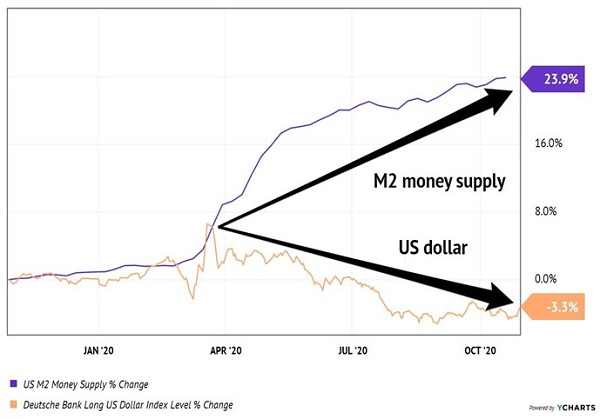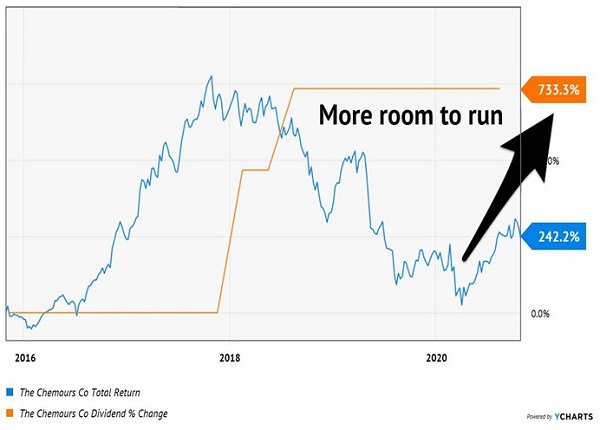If you woke up this morning and thought to yourself:
“Well, at least that’s over with!”
You’re not alone. Historically speaking, financial markets in the US don’t seem to care which side wins on Election Night (or, in the drawn-out days and weeks that will follow). The important thing for the markets is that the election uncertainty is largely over.
As the political carnival fades into our rearview mirror, we’re left with some dividends that made out better than others. Let’s review these winners and losers now.
Winner: Financial Markets
Since March 2009, the long-term (multi-year) trend of the stock market has been up. September and October, two of the rockiest financial months on the calendar, created their usual bouts of nausea.
From a short-term perspective, we should expect more choppiness ahead. Bigger picture, however, we should expect a rising tide will continue to lift our dividend stocks.
One group of high yield ideas, in particular, consists of stocks and funds that are likely to rally into 2021 thanks to a particular loveable loser.
Loser: US Dollar
It’s been many months since the US economy received a multi-trillion dollar stimulus package. With the political order for the next two years now lining up, what better way for our elected officials to celebrate their wins than with stimulus, part two?
After all, they needn’t worry about who will foot the bill. Our money supply, as defined by the Federal Reserve’s own “M2” measure, is already up a breathtaking 24% year-over-year.
More money (dollars) means that each dollar remaining is worth less. It’s a case of supply and demand, and here we have supply already skyrocketing with another “dollar dump” likely on the way:
As M2 Skyrockets, Dollar Slumps

Winner: Jay Powell’s Printing Press
Who exactly is going to finance these new trillion-dollar debts? In theory, it is you and I, the taxpayers, who will be on the hook for the bonds that Uncle Sam issues.
But let’s be honest. Federal Reserve Chairman Jay Powell is simply going to print as much of the stimulus money as he can. Which brings us back to dividend stocks.
When the Fed prints money, equities are the place to be. They go up faster than bonds! And select dividend payers are likely to cruise higher.
For example, The Chemours Co (CC) is a chemical firm that dominates some interesting niches such as marine craft coatings and Teflon ingredients. It’s been a rough market for Chemours’ products in 2020, but the firm still managed to be cash flow positive in the most recent quarter.
The company has $1 billion in cold hard cash—ample liquidity—to “make it” to brighter days in 2021. Shares trade for just 65% of annual sales, much cheaper than shares of parent DuPont, which command 202% of revenues.
Since we added this company to our CIR portfolio just five months ago, it’s delivered total returns of 21% (even after the most recent pullback). This “fallen dividend angel” has more room to run, and shares still yield 5% today:
Chemours Plays “Catch Up” with its Payout

Loser: “Low Vol” Strategies
Investors who are seasick and reaching for their “low volatility” life rafts may be disappointed in the weeks and months ahead when they don’t find any stocks or funds that don’t move on a daily and weekly basis.
But rather than “run from the VIX,” we contrarian income investors should instead embrace the volatility. The ups and downs give us chances to secure more dividends per each dollar we invest. And that, after all, is the name of the cash flow game that we play.
A stock like Chemours pays us 5% while we ride the waves. If we catch it on a “bad day” it may pay even more. I’ll take this type of “5% payer with upside” all day long in this environment. (Remember, when the markets settle down, yields like these quickly evaporate because investors bid the attached share prices up.)
Our Crisis-Proof Retirement Portfolio
Thanks to this, let’s be honest, chaotic market, it is possible for you and me to boost our income by 400% or more. To do so, we needn’t add any additional risk, either.
I’m talking about the “dividend buckets” I highlighted earlier that yield 6%, 7% and even 9%+. These consist of stocks and funds that are steadier than the broader market but dip just enough that we can buy more when the weak hands panic (as they did in September and October.)
And we’re not trading options or penny stocks or even buying on margin. These are simple dividends to buy and hold for many months and years ahead. Click here and I’ll share the details on my Crisis-Proof Retirement Portfolio to 4X Your Income.
